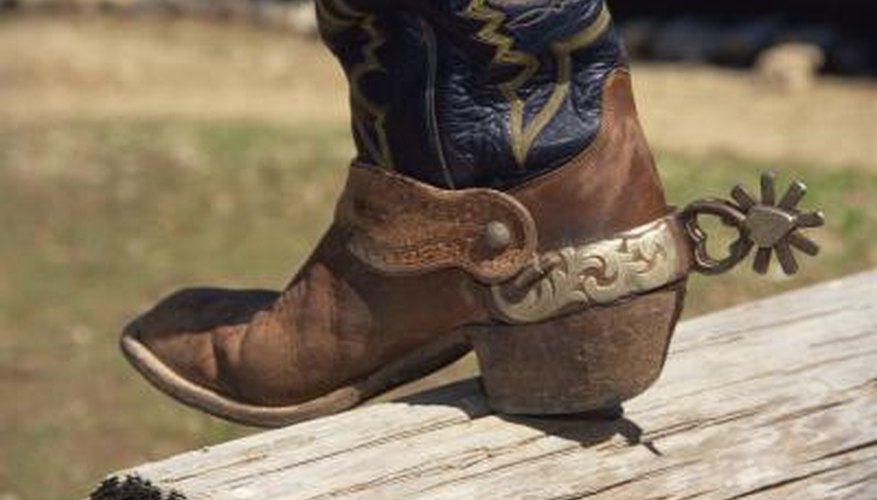Horse riding spurs come in a variety of metals, styles and sizes. These tools are used to give direction to the horse by gently nudging its sides in a system of signals and pressures. They can also be used as a stylish western accessory paired with the right style of boot. Western or English riding boots should be worn when sizing your spurs.
- Horse riding spurs come in a variety of metals, styles and sizes.
- These tools are used to give direction to the horse by gently nudging its sides in a system of signals and pressures.
Ascertain what type of boot you will be sizing the spur for. The boots could be women's, men's or children's. Measure the width at the back of the heel of the boot, about a half inch above the bottom of the boot.
Look over the spur carefully. Ascertain whether the spur is made for women's, men's or children's boots. Children's spurs will be much smaller than adult spurs. Women's spurs should be slightly narrower than men's spurs. Measure the width of the spur from one tip to the other. Compare to the heel measurement from Step 1. These measurements should be close but not exact; the spur measurement should be only slightly smaller.
- Look over the spur carefully.
- Women's spurs should be slightly narrower than men's spurs.
Try pushing the spur onto the heel of the boot. A spur matching the right category of men's, women's or children's should slide onto the boot snugly and with only a small amount of resistance. Do not try to pry open the spur very far when attaching the spur to the heel. Conversely, the spur should not move around or feel loose when it sits on the back of the heel. If the spur is too tight, try using a men's spur size.
